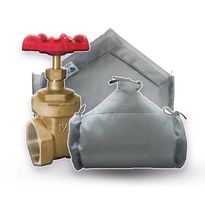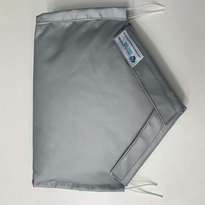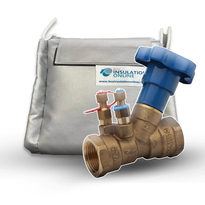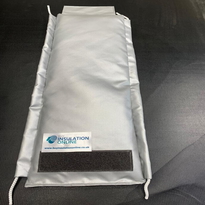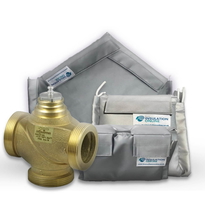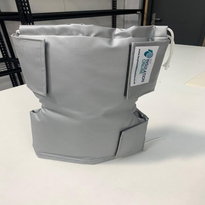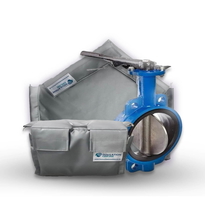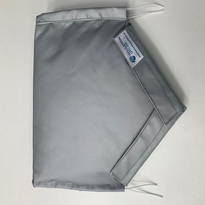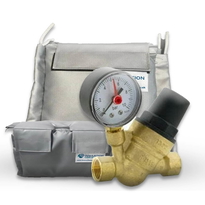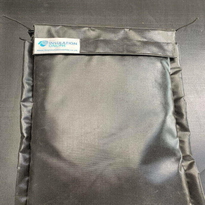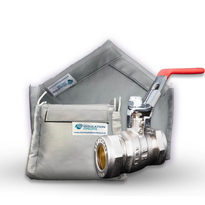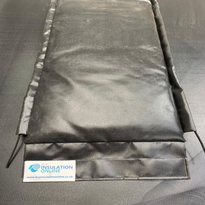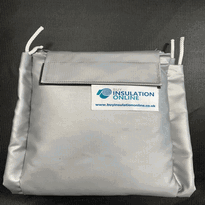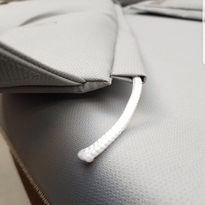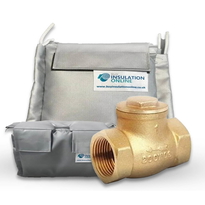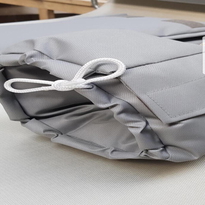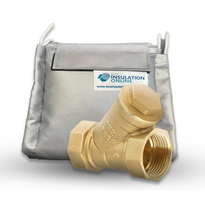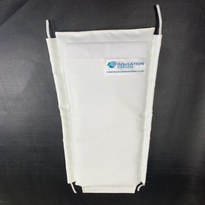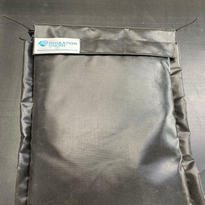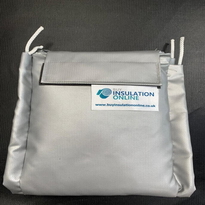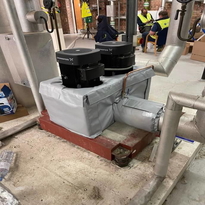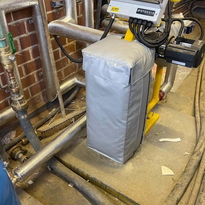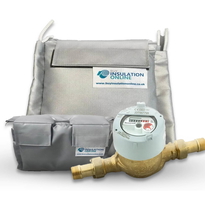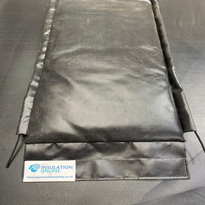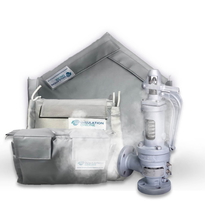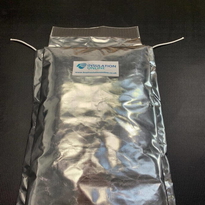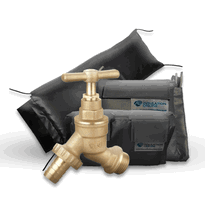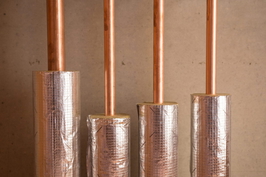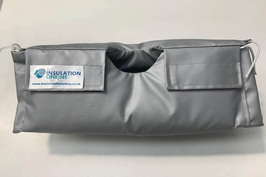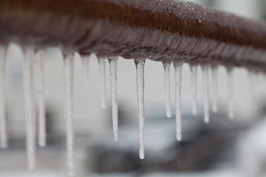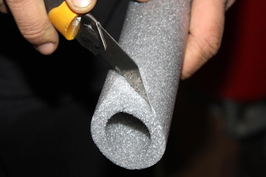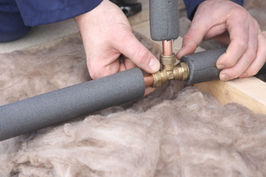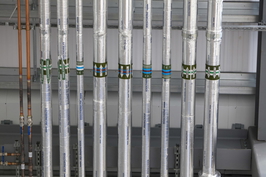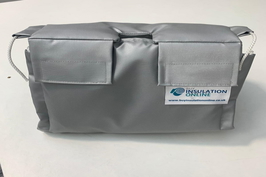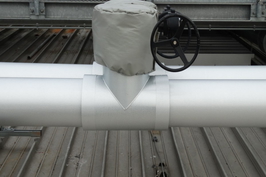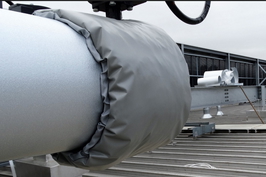Insulated Valve Jackets
Insulated valve jackets are protective covers crafted to enhance thermal efficiency, safeguard the environment, and prolong the lifespan of valves. They are customised to fit a variety of valve types, including butterfly valves, control valves, gate valves, and strainers.
Constructed from robust materials such as fibreglass, silicone-coated fabrics, or metals, these jackets incorporate insulation fillers like rockwool or aerogel. Such materials significantly reduce heat loss—potentially by up to 70%—thereby improving operational efficiency.
Proper installation and routine maintenance are essential to ensure optimal performance. Equally important is selecting the appropriate material based on the operating environment and specific requirements. By understanding these factors, users can choose the most suitable jacket to meet their operational needs effectively, ensuring longevity and efficiency in their processes.
Types of Insulated Valve Jackets and Their Applications
Different types of insulated valve jackets are specifically designed to fit various valve types, each tailored to serve particular industrial functions and applications.
For example, butterfly valve jackets are custom-made to suit the shape and operation of butterfly valves, which control flow by rotating a disc. These jackets help in maintaining the process temperature and protecting the valve from external environmental factors.
Control valve jackets are adaptable for various control valve models and sizes, enhancing thermal efficiency across different industrial processes. They're often used in applications requiring precise temperature regulation to optimise system performance.
Gate valve jackets, which have a shape similar to butterfly jackets, are used with gate valves. Gate valves control flow by raising or lowering a gate and require insulation that ensures longevity and protection against temperature fluctuations.
Strainer valve jackets provide insulation for valves employed to filter out solids in chemical processing and water treatment operations. Their protective covering safeguards valve components while maintaining process temperatures.
3-way valve jackets are designed to accommodate valves with three ports, which are common in systems managing multiple flow channels. These jackets help unify insulation requirements across complex flow systems, contributing to energy efficiency.
Selecting appropriate insulation materials for different valve jackets improves not only energy efficiency but also extends the operational lifespan of the valves under varying environmental conditions.
Each jacket type enhances temperature regulation, promotes energy efficiency, and offers protective measures tailored to specific industrial systems. Choosing the correct insulated jacket ensures optimal valve performance and longevity in various operational environments.
Materials Commonly Used in Insulated Valve Jackets
Materials used in insulated valve jackets are carefully chosen based on their capacity to withstand high temperatures, resist environmental factors, and deliver efficient thermal insulation. Among the most common materials used are silicone-coated glass cloth, PTFE-reinforced fiberglass, and silicone-reinforced fiberglass, all of which offer durability, flexibility, and resistance to harsh conditions.
Metal jackets, crafted from materials such as aluminium, stainless steel, coated steel, aluminised steel, Galvalume steel, and zinc-galvanised steel, provide excellent corrosion resistance and structural strength vital for demanding environments. These metals are often combined with insulating fillers to enhance thermal efficiency.
Fillers like rockwool and aerogel are frequently utilised within insulated jackets. Rockwool is non-combustible and moisture-resistant, making it suitable for many industrial applications. Aerogel, on the other hand, offers superior thermal insulation along with moisture resistance, making it ideal for environments where high performance is required in challenging conditions.
The selection of materials depends on specific application requirements and operating conditions, ensuring that the jacket performs reliably over its service life. The table below summarises key materials used in insulated valve jackets:
Material Type |
Key Properties |
| Rockwool | Non-combustible, moisture-resistant |
| Aerogel | Excellent thermal insulation, moisture resistant |
| Aluminium Sheet | Lightweight, corrosion-resistant |
| Stainless Steel | High resistance to corrosion and fire |
| Silicone-coated Glass Cloth |
Durable, heat-resistant |
Benefits of Using Insulated Valve Jackets in Industry
What're the key advantages of implementing insulated valve jackets in industrial settings? These jackets markedly improve energy efficiency by minimising heat loss from valves, which can lead to potential energy savings of up to 70%. Such savings not only reduce operational costs but also contribute to lowering utility bills. Proper pipe insulation tools and accessories ensure the jacket's effectiveness and ease of installation. By decreasing energy consumption, insulated jackets support environmental sustainability by helping to minimise CO2 emissions.
In addition to energy benefits, insulated valve jackets enhance safety by reducing valve surface temperatures, thereby preventing accidental burns. They also provide protection against harsh environmental conditions, shielding valves from factors such as corrosion and rust.
This protection helps prolong the lifespan of valves, safeguarding them against damage caused by temperature fluctuations and environmental exposure.
Furthermore, systems fitted with insulated jackets tend to become more reliable and easier to maintain. They support optimal valve performance and facilitate safer, more sustainable industrial operations.
Installation, Maintenance, and Customization of Valve Jackets
Installing insulated valve jackets requires a systematic approach that begins with thorough preparation.
First, clean the valve surface meticulously to remove dirt, debris, or any old coatings that could impair proper insulation. Safety precautions, such as wearing gloves, are essential to protect installers from sharp edges during handling.
Next, carefully wrap the jacket around the valve, ensuring a snug fit while maintaining correct alignment with adjacent components. Proper positioning is vital to prevent gaps that could compromise insulation performance. Using custom sizes ensures a precise fit tailored to specific flange diameters, which enhances insulation effectiveness.
Secure the jacket by fastening Velcro straps or tying cords tightly, leaving no gaps and ensuring the insulation remains in place during operation.
Regular inspections are necessary to identify signs of wear or damage. Cleaning the jackets during these checks helps preserve their insulation properties and extends their lifespan.
If damage occurs, jackets should be repaired or replaced promptly to maintain optimal thermal efficiency.
When not in use, proper storage is crucial to prevent unnecessary deterioration. Store jackets in a clean, dry environment away from direct sunlight and other damaging elements.
Customization options, including sizing and material choices, allow the jackets to be tailored to specific operational needs, preventing issues related to improper fit or material incompatibility, ensuring an efficient and durable solution across various applications.
How to Select the Right Insulated Valve Jacket for Your Valve
Choosing the correct insulated valve jacket is crucial to ensure optimal performance, safety, and longevity of your valve system. The selection process begins with a comprehensive understanding of the valve’s specifications and its operational environment.
Assess Valve Type and Fitment
Start by identifying the exact model and type of your valve. Determine whether it's flanged or non-flanged, as this affects the shape and fastening method of the jacket. Consider if your valve has test points, access ports, or existing insulation. Select a jacket that fits securely and allows easy access when needed. Proper fitment is essential to prevent thermal bridging and ensure insulation efficiency.
Evaluate Environmental Conditions
Consider the environmental factors surrounding the valve. These include temperature extremes, ambient climate, exposure to wind, chemicals, or moisture. Such conditions influence the selection of suitable materials and protective features. For instance, installations in more corrosive environments may require jackets with enhanced outer protection to resist chemical degradation and moisture ingress. Weather resistance is a key property to consider in harsh outdoor environments.
Select Appropriate Materials and Features
Choose materials that are compatible with the operational temperature range and environmental conditions. The insulation should offer effective thermal resistance. Outer protective layers guard against physical damage, UV radiation, and chemical exposure. Additionally, assess the fastening methods and access features of the jacket for ease of installation and maintenance. Durability and resistance to wear and tear are important considerations for long-term performance.
Review Compatibility and Operational Needs
Ensure that the insulated jacket is compatible with existing pipe insulation and integrated into your overall thermal management plan. Easy installation, secure fastening, and accessible design are key to reducing downtime and maintaining safety standards.
Consider Cost, Standards, and Longevity
While initial investment is a factor, it’s also vital to consider the durability and compliance of the jacket with relevant standards. Selecting high-quality, compliant insulation jackets can provide better protection and longer service life. This ultimately offers better value over the long term.
Conclusion
Selecting the appropriate insulated valve jacket requires careful consideration of the valve’s specifications, the environmental conditions of its application, and the compatibility of the materials used. Ensuring effective thermal insulation and protection is essential for maintaining operational efficiency and safety. Proper installation, regular maintenance, and potential customisation are vital for maximising performance, safety, and the lifespan of the equipment.
By systematically evaluating these factors, industries across the UK can optimise the advantages offered by insulated valve jackets, such as precise temperature control, energy conservation, and the safeguarding of vital equipment. Accurate selection and diligent management support reliable operation and can help reduce operational costs throughout the service life of the valve.









